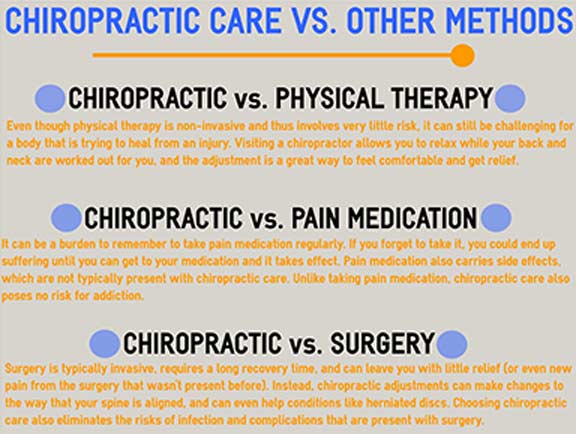Frequent Tasks That Add To Pain In The Back And Ways To Stop Them
Frequent Tasks That Add To Pain In The Back And Ways To Stop Them
Blog Article
Post Created By-Hermansen Landry
Preserving correct position and avoiding usual risks in daily activities can dramatically impact your back health. From how you sit at your desk to just how you raise hefty things, little changes can make a large distinction. Envision a day without the nagging back pain that prevents your every move; the option may be simpler than you assume. By making a few tweaks to your everyday routines, you could be on your means to a pain-free presence.
Poor Posture and Sedentary Way Of Living
Poor position and a less active way of life are two major factors to back pain. When you slouch or inkling over while sitting or standing, you put unneeded stress on your back muscular tissues and spinal column. This can bring about muscle mass imbalances, stress, and ultimately, persistent back pain. Furthermore, sitting for extended periods without breaks or physical activity can damage your back muscular tissues and cause rigidity and discomfort.
To combat inadequate pose, make a mindful effort to sit and stand right with your shoulders back and straightened with your ears. Keep in we care chiropractic to maintain your feet level on the ground and prevent crossing your legs for extended durations.
Including regular extending and enhancing exercises into your daily regimen can additionally help enhance your posture and relieve pain in the back related to a sedentary lifestyle.
Incorrect Lifting Techniques
Incorrect training strategies can significantly add to pain in the back and injuries. When you raise heavy objects, remember to flex your knees and utilize your legs to raise, rather than relying upon your back muscle mass. Prevent twisting your body while training and keep the things near to your body to lower stress on your back. It's critical to keep a straight back and prevent rounding your shoulders while lifting to prevent unnecessary pressure on your back.
Constantly examine the weight of the object prior to raising it. If it's too heavy, ask for help or usage devices like a dolly or cart to carry it safely.
Remember to take breaks during raising jobs to give your back muscle mass an opportunity to relax and protect against overexertion. By applying correct training strategies, you can avoid neck and back pain and decrease the risk of injuries, ensuring your back remains healthy and strong for the long-term.
Absence of Regular Workout and Stretching
A less active way of life devoid of normal exercise and stretching can substantially contribute to back pain and pain. When you do not participate in physical activity, your muscular tissues become weak and stringent, causing poor position and increased stress on your back. Normal workout helps enhance the muscular tissues that support your spinal column, improving stability and decreasing the risk of neck and back pain. Including extending into your routine can likewise improve adaptability, preventing stiffness and pain in your back muscle mass.
To avoid neck and back pain brought on by a lack of exercise and stretching, go for at least half an hour of moderate exercise most days of the week. Consist of back solutions that target your core muscles, as a strong core can assist minimize pressure on your back.
Furthermore, take breaks to stretch and move throughout the day, particularly if you have a desk task. Basic stretches like touching your toes or doing shoulder rolls can aid ease tension and protect against back pain. Prioritizing regular workout and extending can go a long way in keeping a healthy back and decreasing discomfort.
Final thought
So, keep in mind to sit up directly, lift with your legs, and stay active to avoid pain in the back. By making simple modifications to your day-to-day practices, you can prevent the discomfort and limitations that come with back pain. Take care of your spine and muscular tissues by practicing excellent position, proper training techniques, and routine workout. Your back will thank you for it!
